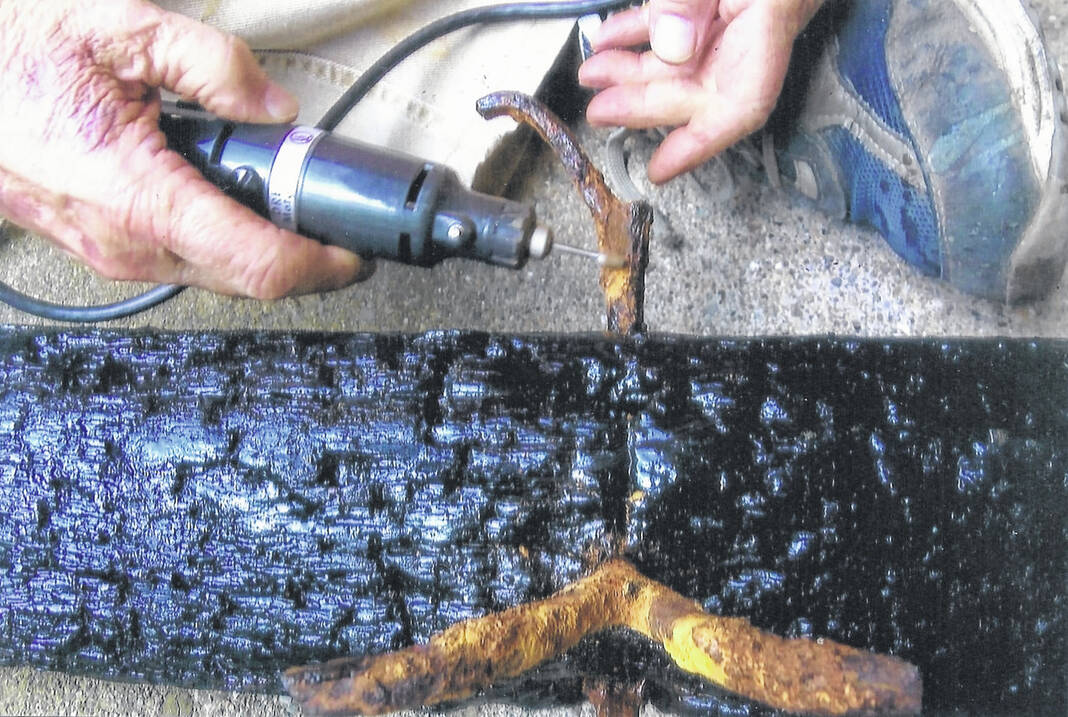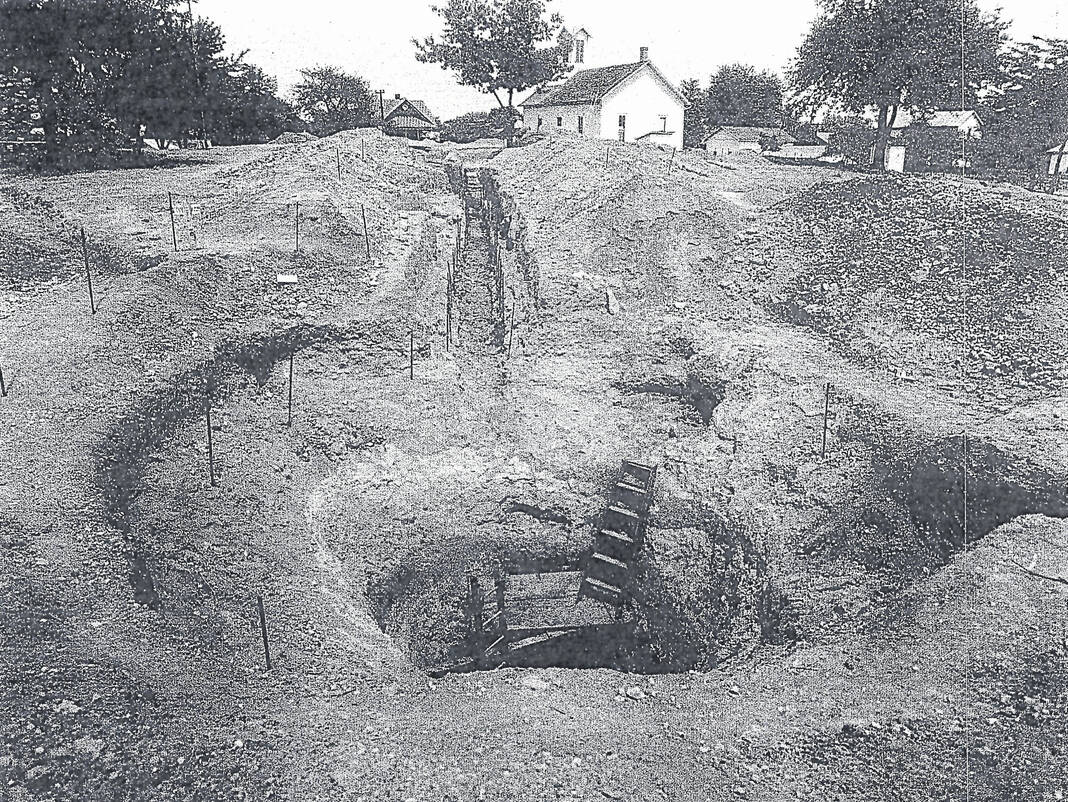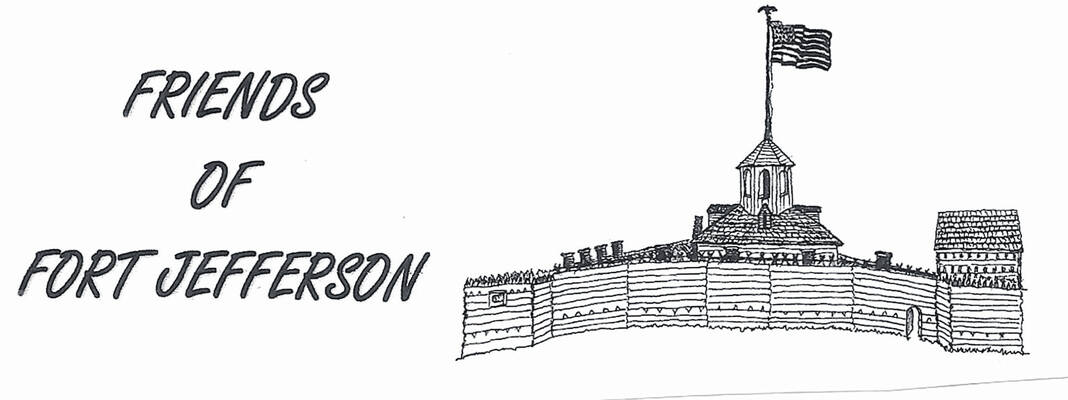
Shown is some of the restoration work on the windlass and the oak timber that was found in the bottom of a well at the fort.
Submitted photos

This photo dates back to 1930 when the fort was excavated. The passage way is 81 feet long, three feet wide and six feet deep.
Submitted photos

GREENVILLE — During the 1930 excavation of Fort Jefferson, an 80-foot tunnel, six foot high, was discovered that ran from its entrance at north-east wall of the fort to the south-west wall of the fort. This passageway tunnel was under the enclosed 100’ x 100’ fort floor. What was it used for?
Although at that time, it was not thoroughly investigated, there must have been rooms off to the side of the underground passage. There was no refrigeration in 1791, so this is where certain food items would have been stored to keep them from spoiling. In November 1793, Matthew Hueston (Hueston Woods fame) was paid $15 to drive a drove of cattle, through the forest, from Cincinnati to Ft. Jefferson and oversee butchering them. This meat would be the fort’s winter supply. Due to lack of salt for curing, the meat was hung around the small fort to air dry until salt could be procured. That must have been a sight.
In Greene Ville underground vaults were dug to keep meat cool. At Fort Jefferson they would have stored the meat in a room to the side of the underground passage. No doubt another room would have been used as a root cellar.
There was a mystery at the south end of the tunnel. A depression in the ground was at first called a magazine. As the men dug down to find the bottom of this room, they were confused by its depth. The room was lined with timber and kept getting deeper. On August 4th, a note was made, “Worked on magazine. Down to a depth of about 12 feet-no bottom yet”. August 8, resumed work on magazine. “Can it be a magazine after all? It will probably prove to be 18 feet deep.” August 12th, down about 20 feet. “What is this hole anyway? There is cribbing and the size in diameter is six-foot square.” August 13th, “pushed with vigor digging magazine.” Finished late afternoon. “It measures 27 feet four-inches deep. It has been a well after all.” It was later determined the ground level of the water in the well was at the same level as the water at the spring downhill outside the fort. At the bottom of the well in the fort were found burned timbers which were part of a “windlass” used to raise the water with a bucket. The fort was abandoned in 1796 and ordered to be burned. The partially burned oak windlass evidently was thrown into the well at that time. Those timbers were recovered and saved at Garst Museum and after 90 years were restored and preserved four years ago. The timbers are pictured in the book “Fort Jefferson” written by Frazer Wilson. It has been reprinted and is for sale in the museum bookstore. It is a worthwhile read for local history buffs.
Incidentally, the fort passageway tunnel would have likely been connected to the tunnel that went to the spring because of their close alignment to the cellar of the southwest bastion of the fort.
During Darke County Prairie Days, Friends of Fort Jefferson will be set up isnide the lobby of the Darke County Park Building to answer questions and sell memberships to support its efforts to preserver 17-acres of Fort Jefferson Battleground adjacent to the Fort Jefferson Memorial Park. A free copy of the Fort Jefferson book will be given with each membership sold.

